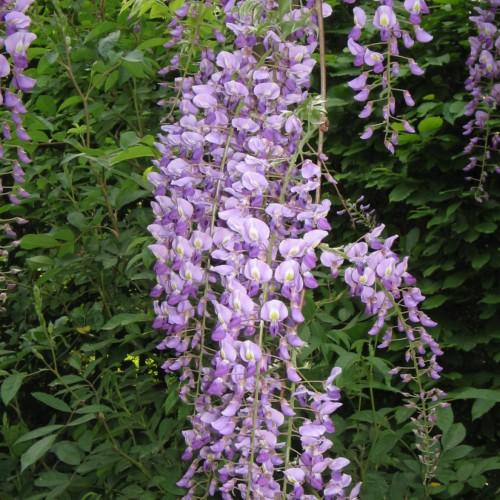
Japanese wisteria
Wisteria floribunda 'Texas Purple'
Cycle:
Perennial
Watering:
Average
Hardiness Zone:
4 - 9
Flowers:
Flowers In Spring
Sun:
Full sun, Part sun/part shade
Soil:
Well-drained
Fruits:
Fruits In Autumn Ready In Fall
Leaf:
Yes
Growth Rate:
High
Maintenance:
High
Invasive:
Yes
Care Level:
Medium
watering
Japanese Wisteria should be watered deeply once a week during the active growing season (spring to fall). During periods of extreme heat or drought, water more frequently, keeping the soil lightly moist but not wet. In winter, reduce watering and let the soil dry out more between waterings.
sunlight
Japanese Wisteria (Wisteria floribunda 'Texas Purple') needs full sun to thrive and flower abundantly. It should receive at least 6 hours of full sun per day, preferably in the morning and early afternoon, with some shade in the hottest part of the day. Too much shade or total afternoon shade will reduce blooming and lead to more foliage growth. Do not plant it in an area that will be shaded all day, such as near large trees.
pruning
Japanese Wisteria (Wisteria floribunda 'Texas Purple') should be pruned in late winter or early spring when the stem tips are still showing their woody nature. The pruning should begin as soon as the plant has grown to a size where it can be managed. Start by removing dead, diseased, or damaged stems, then trim back any overly long stems. Cut back the vines that had flowered during the season by about 1-third to 1-half of their length. If you plan to use the stems for hanging baskets or trellises, ensure they are pruned to the desired size and shape. Finally, lightly prune the sideshoots to encourage a bushier form.
